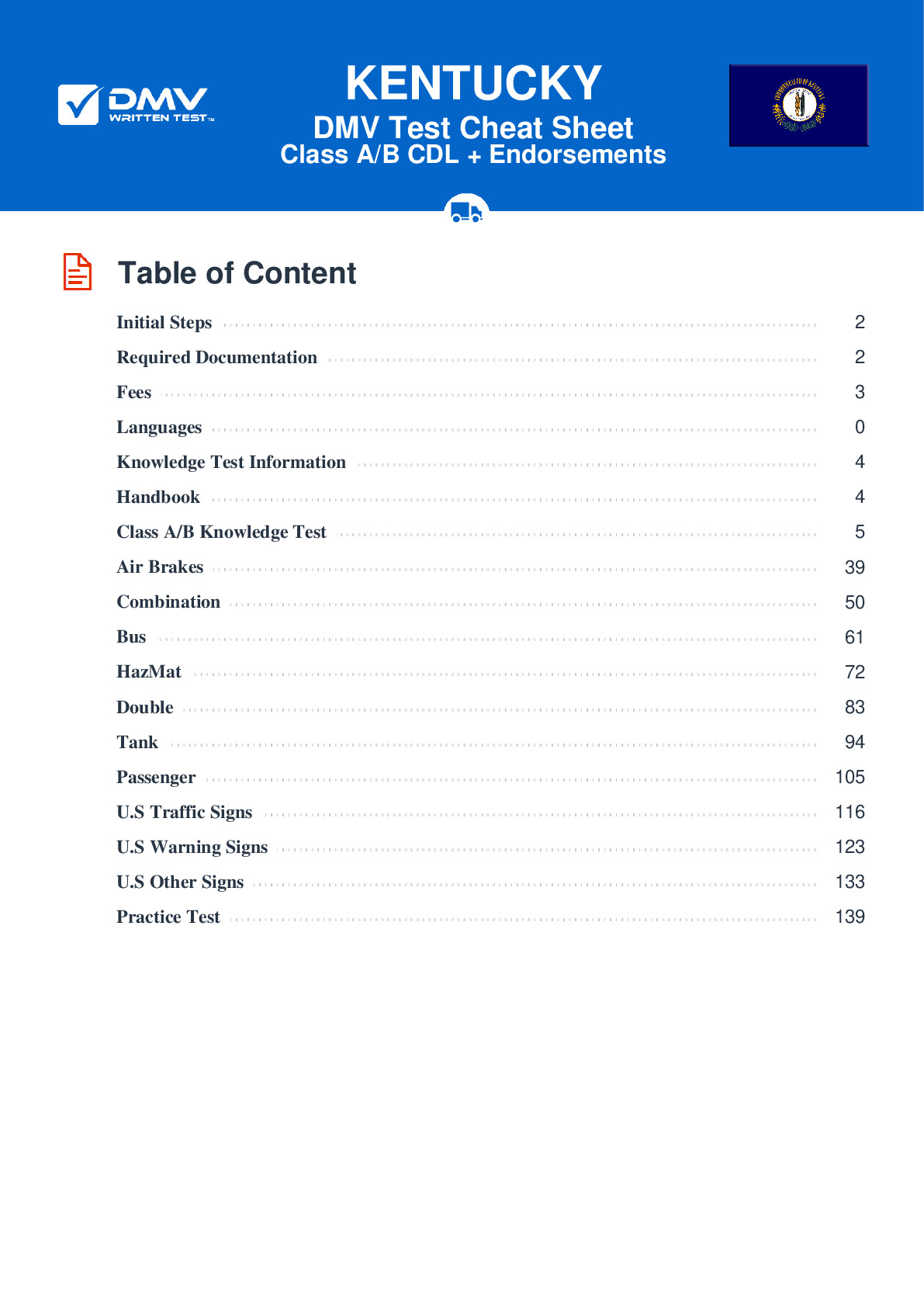Air Brakes
This endorsement is required for driving a vehicle with air brakes. To receive this endorsement, applicants must pass a written test. The test consists of 25 multiple choice questions. Each question has three answer choices. To pass, the applicant must answer at least 20 questions correctly. Test questions come from the Kentucky Commercial Driver License Manual. Questions come from the chapter covering: Air Brakes. The Air Brakes endorsement may be used with the Class A, B or C CDL.
Number of Question
Passing Score
13. Which of the following is not part of a vehicle’s air brake system?
Explanation
Components of an air brake system include an air compressor, an air compressor governor, air storage tanks, air tank drains, an alcohol evaporator, a safety valve, a brake pedal, foundation brakes, supply pressure gauges, an application pressure gauge, a low air pressure warning signal, a stop light switch, a front brake limiting valve (on some older vehicles), spring brakes, and parking brake controls.
14. A safety valve is set to open at ____ pounds per square inch (psi).
Explanation
The safety valve protects air tanks and the rest of an air brake system from accumulating too much air pressure. The safety valve is usually set to open at 150 psi.
15. On flat surfaces, wheel chocks:
Explanation
In situations where a driver cannot use a parking brake, wheel chocks can be used to hold a parked vehicle in place on a level surface.
16. The parking brake in a newer vehicle is applied by:
Explanation
In newer vehicles with air brakes, the parking brake is controlled by a yellow, diamond-shaped knob. The driver should pull the knob outward to apply the parking brakes and push the knob inward to release them.
17. Failing to drain air tanks could result in:
Explanation
In an air brake system, the air tanks must be periodically drained to remove accumulations of water and compressor oil. If water is not removed, it could freeze in cold weather and cause brake failure.
18. When parked on a flat surface, you should:
Explanation




